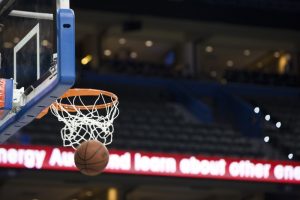 April 7, 2003 will go down in the history books for me. The streets of Syracuse, New York, were abuzz. I was a junior television major, and our men’s basketball team had just won its first NCAA basketball title. Our three-seed Orangemen had bested #2 Kansas in New Orleans, but the party was on in Syracuse. Each spring, college basketball fans around the country are glued to TVs, laptops, tablets or mobile phones – sometimes all four at once – hoping to clinch that elusive crown.
April 7, 2003 will go down in the history books for me. The streets of Syracuse, New York, were abuzz. I was a junior television major, and our men’s basketball team had just won its first NCAA basketball title. Our three-seed Orangemen had bested #2 Kansas in New Orleans, but the party was on in Syracuse. Each spring, college basketball fans around the country are glued to TVs, laptops, tablets or mobile phones – sometimes all four at once – hoping to clinch that elusive crown.
Selection Sunday, this year on March 13, sets the tone for the gut-wrenching weeks to come. It often comes with surprises for fans, but not for Professor B. Jay Coleman, Ph.D. of the University of North Florida. Back in 2001, Dr. Coleman and his colleagues created the “Dance Card” – powered by SAS Analytics – to predict which teams will receive at-large tournament bids. Since 2012, the Dance Card has correctly predicted 141 of 146 bids – a remarkable 97 percent success rate.
This year is likely to live up to history. At this writing, the formula predicts that the top three teams – Kansas, Villanova and Oklahoma – are 100 percent likely to receive a bid. That’s held true for most of the season. Last year’s national champion, Duke, is ranked 14. The Devils are also all but guaranteed a place in the tourney spotlight. At #39, my Syracuse has slipped a bit in the Dance Card. But it’s still a lock.
Last year proved that even a miss can be a win for analytics when the Dance Card slipped up on the Dayton Flyers (sitting pretty this year at #25). It predicted the Flyers wouldn’t make the field, despite most experts having them easily snagging an eight or nine seed. Dr. Coleman recalls Twitter barbs from Dayton fans claiming the team would blow up Dance Card predictions.
Come Selection Sunday, Dayton did indeed grab a bid – but only barely. As the last at-large team selected, they were slotted in one of the “First Four” play-in games. While the team appeared stunned at the news (cameras are everywhere these days), the Dance Card knew Dayton was on the bubble. So, even though it went down in the books as a miss, the analytics predicted the selection committee’s perception of Dayton far better than the pundits did. The team later lost in the third round.
Could there be another Dayton this year? The analytics don’t lie, says Dr. Coleman. According to the Dance Card, Butler may be getting a bit too much love. Same could be said for Gonzaga. Both perennial picks are sitting below the bubble at 54 and 55, respectively.
A few more weeks will tell. Bookmark Dr. Coleman’s Dance Card in advance of filling out your bracket, or follow him on Twitter at @AnalyticsProf for updates that could keep your bracket from busting.
